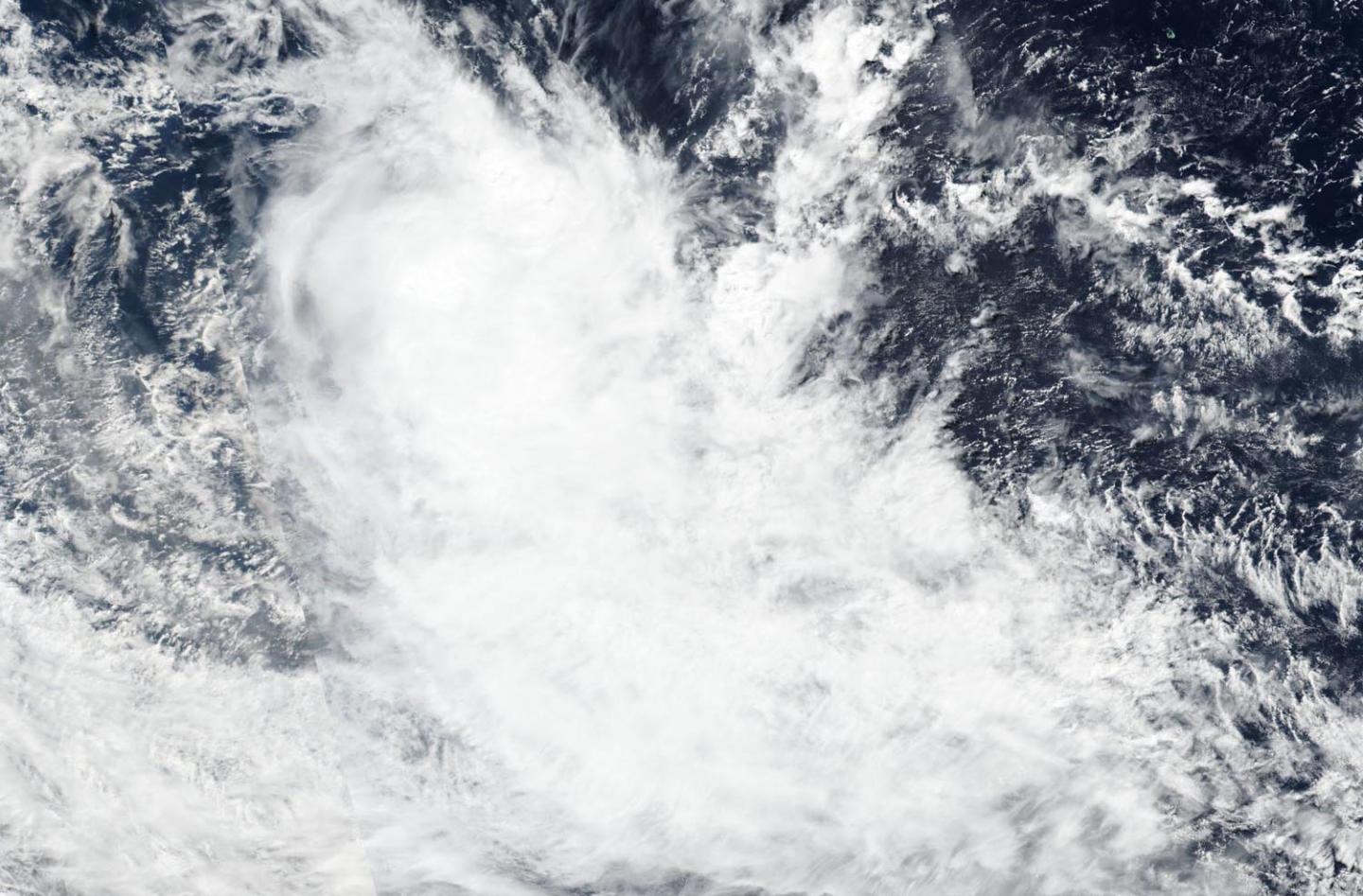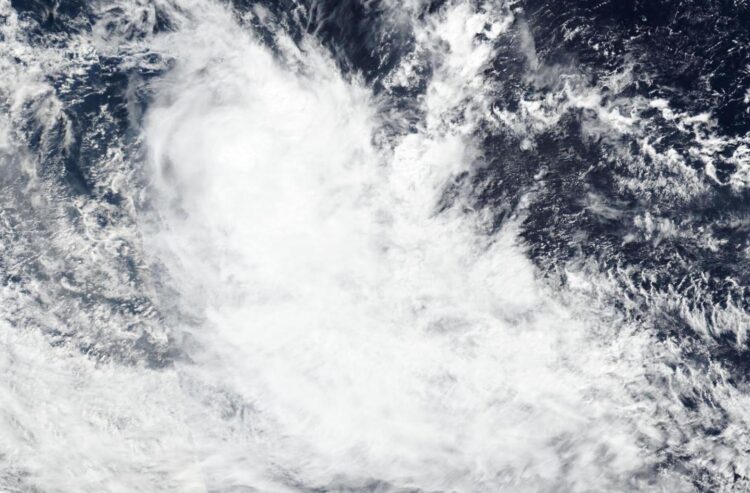
Credit: NASA Worldview, Earth Observing System Data and Information System (EOSDIS)
The latest tropical cyclone to develop in the Southern Indian Ocean is no threat to land areas. NASA-NOAA’s Suomi NPP satellite provided forecasters with a visible image of Tropical Storm Jeruto on April 15, 2020.
Visible imagery from NASA satellites help forecasters understand if a storm is organizing or weakening. The visible image created by the Visible Infrared Imaging Radiometer Suite (VIIRS) instrument aboard Suomi NPP showed Jeruto was being affected by wind shear after it developed. Vertical wind shear, that is, winds outside of a tropical cyclone at different heights in the atmosphere (the troposphere) push against a tropical cyclone and tear it apart.
The shape of a tropical cyclone provides forecasters with an idea of its organization and strength, and NASA-NOAA’s Suomi NPP satellite showed the storm appeared elongated, as outside winds were pushing clouds away from the center of circulation.
On April 15 at 5 a.m. EDT (0900 UTC), Jeruto’s center was located near latitude 15.8 degrees south and longitude 84.3 degrees east. Jeruto was moving west-southwest near 10 knots (12 mph/19 kph). Maximum sustained winds were near 40 knots (46 mph/76 kph).
The Joint Typhoon Warning Center noted vertical wind shear (wind speeds) will increase and will likely dissipate the storm within a couple of days.
###
Tropical cyclones/hurricanes are the most powerful weather events on Earth. NASA’s expertise in space and scientific exploration contributes to essential services provided to the American people by other federal agencies, such as hurricane weather forecasting.
By Rob Gutro
NASA’s Goddard Space Flight Center
Media Contact
Rob Gutro
[email protected]
Original Source
https:/





